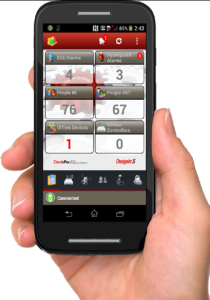According to the United States Census Bureau’s annual population projections, the United States will have a 2015 estimated population of 320 million people. Keeping that figure in mind, the statistics for credit card holders in the United States is 1,895,834,000. And the average amount of credit cards a holder has is 3.7. With those figures in mind it is no wonder the security threat an American faces regarding identity theft, credit card theft and other related issues concerning security is great. If you use a credit card or shop online, make sure that you always check your charges and alert the credit card company of any discrepancies you may see with your credit card bill. For more news about this topic, follow the links below.
LP101: Establishing a Safety Culture is Critical to Safety in the Workplace
Leadership Must Establish and Maintain an Environment that Adopts Safety as a Core Value
An effective safety culture is widely accepted as being the essential component in the development and implementation any program supporting safety in the workplace. The safety culture reflects the attitudes, perceptions, values and beliefs that all employees within the organization share in regards to safety, and serves as a guide as to how safety is managed in the workplace.
Preventing accidents is about ensuring that everyone, regardless of their position in the organization, follows safe practices and safety procedures. A safety culture which actively engages everyone through personal responsibility instills the qualities that motivate employees to strive to achieve safety excellence. Rather than simply posting policies and procedures, safety is incorporated into our strategic plans and everyday mission.
An effective safety culture is an informed safety culture, and is the product of the values, perceptions, competencies, attitudes, and patterns of behavior that clarify the commitment and proficiency of the company’s safety management program. That vision calls for an absolute belief that every employee can help create and maintain a workplace free of illness and injury; demonstrated by an active commitment to safety in the workplace throughout the entire organization. When building this culture, management must establish and maintain an environment that adopts safety as a core value of the company, following fundamental safety principles:
How the ‘Ten Commandments’ of Cyber Security Can Enhance Safety
Hacker attacks such as the one on Hollywood Presbyterian Medical Center show how easily digital platforms can be turned against organizations, but taking 10 steps can augment security, write RANE founder David Lawrence and his co-authors in this opinion piece.
Imagine you are admitted to a hospital for treatment of a serious but treatable illness, and then your records are stolen. The medical staff is now at a complete loss about your care. While the doctors are scrambling to figure out what to do, they soon realize that all the hospital’s records are missing and that someone is demanding that the hospital pay a ransom in exchange for their release. Now imagine further that the hospital has no alternative but to pay the demand (in Bitcoins) in order to ensure the safety of its patients.
One has to look no further than the recent attack on Hollywood Presbyterian Medical Center and other headlines to realize how quickly and easily our digital platforms can be used against us. While the Internet has delivered on its promise of global access and efficiency, it also accelerates and scales the darker forms of human activity — theft, fraud, extortion, blackmail, espionage (state and corporate), terrorism, insider trading, property destruction and criminal mischief. Soon, the Internet of Things (IoT) will even more seamlessly connect our devices to everything we need — as well as everything we need to fear.
Online Scams: How Can You Protect Yourself and Your Family?
Dear Carrie: My mother is quite independent and does a lot of her financial business online. I hear about fraudsters preying on seniors all the time and worry about her falling for a scam. How can I protect her?
Dear Reader: It seems there’s no limit to the imaginative scams that today’s fraudsters can come up with. Just when we’ve all become aware of the email from a “friend” purporting to have been robbed in some far-flung place and needing money, there’s the new scam threatening arrest if you don’t pay back taxes or the tech support scam or—you name it. Seniors are a prime target because they’re perceived as more likely to have assets—and perhaps less likely to be skeptical.
But financial fraud isn’t age specific; we’re all targets. When you consider that the FBI’s Internet Crime Complaint Center (IC3) received 269,422 complaints representing more than $800,000,000 in losses in 2014 alone (and it’s estimated that only 15 percent of victims report crimes), you start to understand the enormity of the problem.
So, while it’s great that you want to protect your mother, when it comes to the potential for being scammed, we all need to take heed. My advice would be to sit down with her— and the rest of your family — to discuss best practices for fraud protection both on and off the Internet.


 Burnout is an on-going, serious issue in the retail industry. The industry is so immense and pervasive that all of us, even if we’ve never working in retail, have knowledge of and experience with the problem.
Burnout is an on-going, serious issue in the retail industry. The industry is so immense and pervasive that all of us, even if we’ve never working in retail, have knowledge of and experience with the problem. The cost of cyber security for retailers seems to double year after year. The cost of a data breach in this country in 2014 cost the retailer an average of
The cost of cyber security for retailers seems to double year after year. The cost of a data breach in this country in 2014 cost the retailer an average of I don’t care about solving social problems. I don’t care about saving the world (okay maybe I really do). But I cannot fix many of these things myself. I cannot make shoplifters change their evil trade for real work. But I can make shoplifters go somewhere else and leave my customers alone.
I don’t care about solving social problems. I don’t care about saving the world (okay maybe I really do). But I cannot fix many of these things myself. I cannot make shoplifters change their evil trade for real work. But I can make shoplifters go somewhere else and leave my customers alone.  Over the past five years or so, social media platforms have exploded. Sites like Facebook, Twitter, or Instagram are essentially a one stop shop for all your news, entertainment and whatever your Aunt Dolly is doing today… Like most Americans, I visit these websites frequently throughout the day (although, I am weaning myself off this addiction slowly, but surely). Businesses have also been quick to jump on the bandwagon and have found that direct to consumer marketing, especially the free kind of marketing, can really help a small business soar. With so many people, places and things interconnected, you can see how the Loss Prevention Industry uses these platforms to not only aid in investigations, but to help track down fencing operations, retail ORC groups and even dishonest employees.
Over the past five years or so, social media platforms have exploded. Sites like Facebook, Twitter, or Instagram are essentially a one stop shop for all your news, entertainment and whatever your Aunt Dolly is doing today… Like most Americans, I visit these websites frequently throughout the day (although, I am weaning myself off this addiction slowly, but surely). Businesses have also been quick to jump on the bandwagon and have found that direct to consumer marketing, especially the free kind of marketing, can really help a small business soar. With so many people, places and things interconnected, you can see how the Loss Prevention Industry uses these platforms to not only aid in investigations, but to help track down fencing operations, retail ORC groups and even dishonest employees. Ever notice how so many different shoplifters, from various backgrounds and demographics all share similar characteristics in the manner in which they steal, the product that they steal and the methods used to conduct their acts? Well, I did and it really got me thinking. Why was this so? Is there some large underground shoplifting network where this information is swapped amongst the thieving brethren? Kind of.
Ever notice how so many different shoplifters, from various backgrounds and demographics all share similar characteristics in the manner in which they steal, the product that they steal and the methods used to conduct their acts? Well, I did and it really got me thinking. Why was this so? Is there some large underground shoplifting network where this information is swapped amongst the thieving brethren? Kind of. What is the most important factor to consider when you make a shoplifting apprehension?
What is the most important factor to consider when you make a shoplifting apprehension?
 Using Facebook, their own websites and other social media outlets, many retailers have for years posted
Using Facebook, their own websites and other social media outlets, many retailers have for years posted